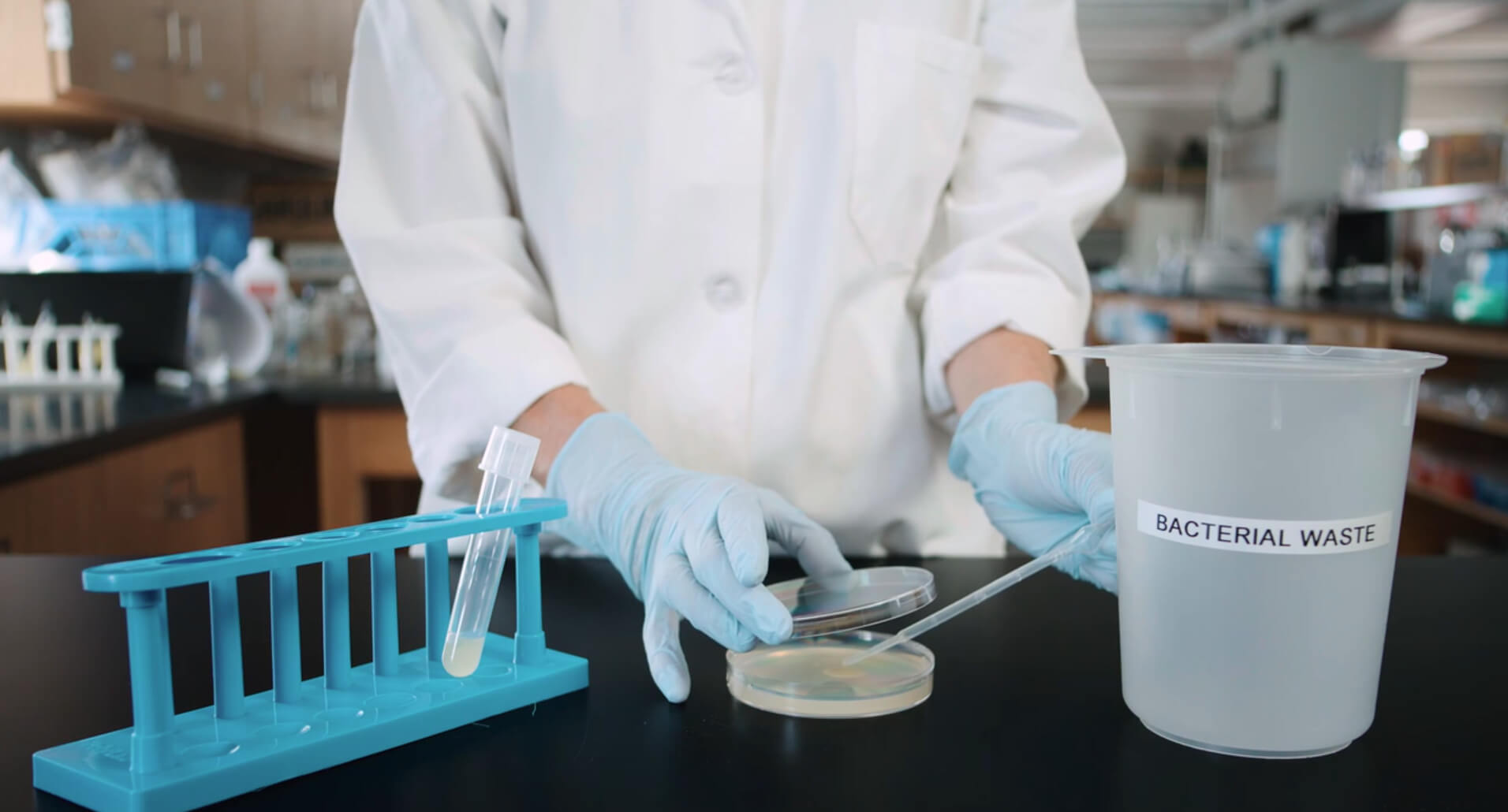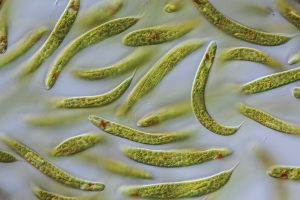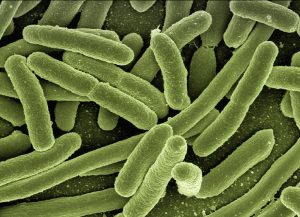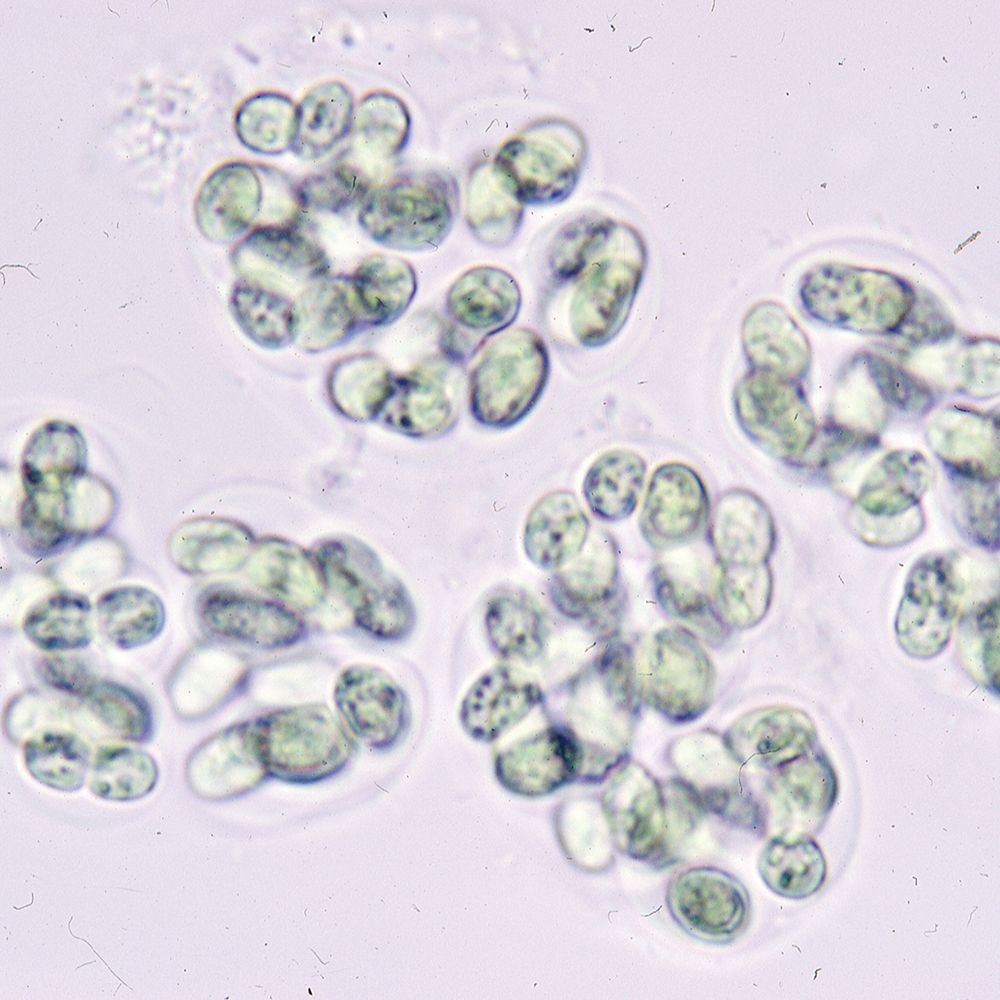Carolina LabSheets™
Overview
In this lab students observe two examples of cyanobacteria and make a simple comparison to a eukaryotic green alga.
Needed Materials
- culture of Anabaena (151710)*
- culture of Gloeocapsa (151800)*
- culture of Zygnema (152695)*
- methylene blue staining solution (875911)
- dropping pipets
- paper towels
- compound microscopes
- microscope slides
- coverslips
- Azolla (161800)
- *Each culture is sufficient for 30 students, or 60 working in pairs
Optional Materials
Safety
Ensure that students understand and adhere to safe laboratory practices when performing any activity in the classroom or lab. Demonstrate the protocol for correctly using the instruments and materials necessary to complete the activities, and emphasize the importance of proper usage. Use personal protective equipment such as safety glasses or goggles, gloves, and aprons when appropriate. Model proper laboratory safety practices for your students and require them to adhere to all laboratory safety rules. Know and follow your district’s guidelines so you are prepared if a student should ingest a culture. Dispose of cultures remaining after the completion of the activities by flushing them down a sink with tap water. The chlorine and chloramine in most tap water will kill the algae. If your tap water is not chlorinated, pipet 1 mL of household bleach (sodium hypochlorite solution) or isopropanol (rubbing alcohol) into the culture and wait 15 minutes before flushing down the sink.
Procedures
Students can work individually or in pairs.
When you receive your cultures, remove them from the shipping container and inspect them. Place the culture tubes in a test tube rack or stand them upright in a beaker and maintain them under normal room light until ready to use. Intense light may bleach out cyanobacteria. For best results, use the cultures within 3–7 days of receipt. See our Culturing Algae booklet, which is sent with your order, for information on long-term maintenance of algae cultures.
Set up a separate workstation for each alga culture, including the following items: alga culture, dropping pipet, microscope(s), microscope slides, and coverslips.
Set up a staining station at a sink with the following items: methylene blue, dropping pipet, paper towels.
Each of our algae cultures contains enough material to make 30 wet-mount preparations.
Optional: Cell size may be compared more accurately if the students determine the actual diameter of the field of view of their microscopes. This may be done with a micrometer disc (591425) and a stage micrometer (591430). Also, some websites include micrometer scales printable onto transparency film. See for example http://www.eeob.iastate.edu/faculty/DrewesC/htdocs/microruler-links.htm.
An Anabaena species forms a symbiotic relationship with Azolla (161800), a floating water fern. Break off a small portion of Azolla and place it in a drop of water on a slide. Add a plastic coverslip and apply pressure with the eraser of a pencil. This will crush the frond and release short filaments of Anabaena into the water.
Answer Key to Questions Asked on the Student Labsheet
Anabaena
76 cells of Anabaena equal the diameter of the field of view. Answers will vary.
Zygnema
Look for the chloroplasts. How many chloroplasts are in most cells? 2 The chloroplasts of Zygnema are often described as stellate. What does this mean?
Stellate means star-shaped. If any students mention that the chloroplasts look like asterisks (*), you may want to point out that both “aster” and “stellar” refer to stars (thus, astronomy, Asteraceae, interstellar space, etc.).
8.5 cells of Zygnema equal the diameter of the field of view. Answers will vary.
Cell length for Anabaena = 300 µm ÷ 76 = 3.9 µm Answers will vary.
Cell length for Zygnema = 300 µm ÷ 8.5 = 35 µm Answers will vary.
On the basis of your observations and the assumption that the organisms you have observed are typical representatives, list at least two ways that that cyanobacteria differ from eukaryotic algae.
Cells of cyanobacteria are smaller than cells of eukaryotic algae.
Cells of eukaryotic algae have chloroplasts, which cyanobacteria lack.
RELATED PRODUCTS
Microbiology Resources

Lab Skills: Aseptic Technique

Protists: Key to Algae Mixtures

Bacterial Growth on MacConkey Agar

Introduction to Protists: Euglena

Introduction to Prokaryotes: Cyanobacteria

Introduction to Prokaryotes: Bacteria

Introduction to Fungi

Introduction to Prokaryotes: Archaea






